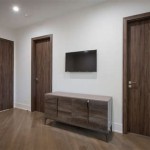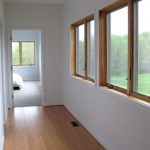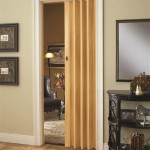Interior Design 3D Rendering: A Visual Blueprint for Success
In the realm of interior design, where aesthetics meet functionality, 3D rendering has emerged as an indispensable tool, transforming the design process from a mere concept to a tangible, immersive experience. 3D rendering, a computer-generated simulation of a space, allows designers to visualize their ideas with unparalleled detail, providing clients with a clear and captivating glimpse into the final product. This technology has revolutionized the way designers communicate their vision, enabling them to refine designs, explore different possibilities, and ultimately deliver projects that exceed client expectations.
The Power of Visualization
The significance of 3D rendering lies in its ability to bridge the gap between imagination and reality. Before the advent of this technology, designers relied on physical models or hand-drawn sketches, often failing to convey the true scale, texture, and ambiance of a space. 3D rendering liberates designers from these limitations, offering them the freedom to create photorealistic representations of their designs, complete with accurate lighting, materials, and furniture placement. Clients can now experience their dream spaces virtually, allowing them to make informed decisions, explore various design options, and ensure that their vision is perfectly realized.
Enhancing Communication and Collaboration
3D rendering also fosters seamless communication and collaboration between designers and clients. By presenting their design in a visually compelling way, designers can engage with clients on a deeper level, fostering understanding and trust. The ability to interact with the rendered space, move through it, and explore different perspectives allows clients to provide valuable feedback, ensuring that the final design is a true reflection of their desires. This collaborative process not only improves the quality of the design but also strengthens the relationship between designer and client.
Accelerating the Design Process
Beyond its aesthetic and communicative advantages, 3D rendering also streamlines the design process, leading to increased efficiency and cost savings. By creating virtual prototypes, designers can experiment with different layouts, materials, and finishes without incurring the expense of real-world construction. They can quickly identify potential problems and refine their design based on client feedback, minimizing revisions and delays. The ability to test different design iterations in a virtual environment significantly reduces the time and cost associated with traditional methods of design and planning.
The Applications of 3D Rendering in Interior Design
The applications of 3D rendering extend far beyond creating stunning visualizations. Designers utilize this technology for various purposes, including:
- Space planning and layout: 3D rendering allows designers to experiment with different furniture arrangements, flooring materials, and wall treatments to create efficient and aesthetically pleasing layouts.
- Material selection: Designers can showcase various materials in their true-to-life colors, textures, and finishes, enabling clients to make informed choices about the materials that best suit their needs and preferences.
- Lighting design: 3D rendering allows designers to simulate different lighting scenarios, ensuring that the space is well-lit and has the desired ambiance.
- Virtual tours: 3D models can be used to create interactive virtual tours, allowing clients to experience their future spaces from the comfort of their own home.
The Future of Interior Design 3D Rendering
The future of interior design 3D rendering is bright, with advancements in technology continually pushing the boundaries of what is possible. The development of Virtual Reality (VR) and Augmented Reality (AR) technologies is revolutionizing the way designers interact with their creations and the way clients experience their future spaces. These immersive experiences provide a more realistic and engaging way to visualize and understand design concepts, further enhancing the collaborative process between designer and client.
As the technology continues to evolve, 3D rendering is poised to become even more integral to the design process. This powerful tool empowers designers to create spaces that are not only visually stunning but also functional, sustainable, and tailored to the unique needs and preferences of their clients. The possibilities are endless, and the future of interior design promises to be even more exciting with 3D rendering at its core.

Importance Of 3d Rendering In Interior Design Shalin Designs

Benefits Of 3d Rendering In Interior Design

Interior Visualization Services 3d Rendering

How Can 3d Rendering Revolutionize Interior Design

How 3d Rendering For Interior Design Can Improve Profits Guide

Let S Know More About Interior 3d Rendering Applet3d

How 3d Rendering For Interior Design Can Improve Profits Guide

Importance Of 3d Rendering In Interior Design Shalin Designs

Beautiful Interior Design Rendering Sonny Ash

Why Is 3d Rendering Important In Interior Design Mapsystems








